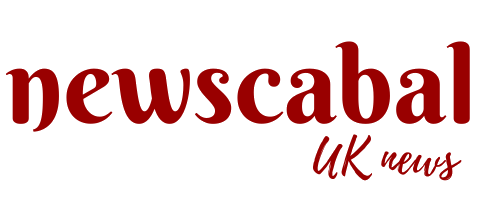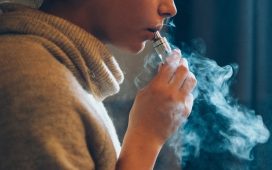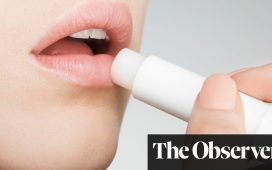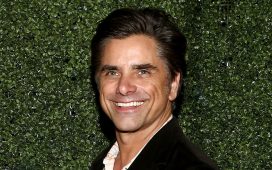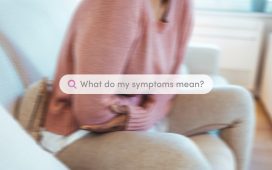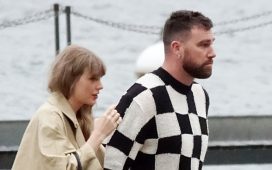When Doja Cat arrived at the Met Gala on Monday night, you’d be forgiven for thinking she had been caught in a downpour. Her dress was soaked and streaks of mascara streamed down her face. The look, which turned out to be the work of makeup artist Pat McGrath, has since gone viral.
The American rapper wasn’t the only one to veer away from traditional red carpet beauty that night. Actor Amanda Seyfried dyed her blond hair grey and, rather than the traditional red, her lips were a lurid purple, the colour of verbena. Zendaya, who walked the carpet not once but twice, wore her eyebrows so pencil-thin that they almost disappeared.
Rejecting traditional beauty standards, these stars are leaning into a movement that has become know as “ugly beauty”. Gaining traction in recent years, it has been thriving on social media and spans everything from intentionally unblended foundation on jaw lines to gradient coloured lips and the use of prosthetics to change the shape of cheekbones or to create tiny forehead horns.
Unlike makeup trends such as “clean girl”, where glassy skin appears poreless, or the “glazed-doughnut” aesthetic, where cheekbones shimmer like the icing on the frosted snack, the aim is not to heighten attractiveness. Instead, it’s pushing the boundaries of what beauty is.
Emily Schubert, one of cinema’s foremost makeup artists, sees it as the worlds of special-effects and real-life makeup becoming ever more blurred. Her new book, Beauty of the Beast: A Makeup Manual, from independent production house A24, which is behind films such as Priscilla and The Zone of Interest, aims to share some of her tricks, from how to create the illusion of having no eyebrows to how to make hair look like it’s turning grey.
This might not sound like something to aim for in everyday life, but Schubert, who began to think about makeup differently after seeing how grey her face was after scoliosis surgery at 13, says it has become a kind of storytelling device. “Especially since we are now looking at screens more than ever and seeing people in 2D form.”
The term “ugly makeup revolution” was originally coined by the London-based visual artist Eszter Magyar in 2018. Six years on, Magyar says the reason it has surged is people “have got bored of fake, filtered perfection”. While she has mixed feelings on the trend, she still appreciates it as “a modern counterpoint to all the cookie-cutter aesthetics; character over perfection”.
Filters have gone from being a silly feature (remember the dog ears) to a tool used by the majority of young people posting online – a City, University of London study on smartphones and appearance in 2023 found that 90% of twentysomething women used a filter on a selfie. This dominance has blurred the lines between what we look like online and offline as they continually smooth skin, raise cheekbones and even give the illusion of a full face of makeup.
Some see the rise of ugly beauty as a backlash to these unattainable ideals of beauty, especially as AI continues to shift the parameters of what is possible. “People are under more pressure than ever to adhere to unrealistic and ever-changing beauty standards, whether that’s through filters or ‘tweakments’, and to conform to homogenised ideals of what they ‘should’ look like,” says Alex Peters, beauty editor at Dazed, where the trend resonates strongly with the magazine’s readers. “I think ugly makeup acts as a pressure valve, in a way, helping people release some of that stress.”
On Instagram it has become the norm to edit blemishes and acne scars. Some spend hours concealing them with makeup while others eradicate them with apps such as Facetune. But again Schubert makes an art of them, using K-Y Jelly to give a tactile effect to skin when creating pimples. On a long film shoot, Schubert considers how a spot develops over time: it may start out oozing but gradually scabs on a character’s face.
after newsletter promotion
Age is another subject that “ugly beauty” likes to toy with. While social media is rife with videos of (typically) young users asking viewers to guess their age, then getting upset when they speculate correctly or higher, Schubert, who has worked with celebrities such as Dev Hynes and model Bella Hadid, has a whole chapter dedicated to making yourself look younger and older. To smooth wrinkles, she uses face tape but can also use the same tape to create the illusion of drooping skin.
Historically, cosmetic enhancements were a luxury limited to a cohort with a high disposable income. Now, Botox and fillers are offered as “lunchtime treatments” with the average price in the UK starting from £100. So quotidian are they that a recent article on Dazed even pondered if “ugly” could in fact one day become aspirational: “If we imagine a future where the majority of people have smoothed their wrinkles away with Botox, plumped up their lips with filler, sucked out their cheeks with buccal fat removal and straightened their teeth with veneers, will it become desirable to have the natural features that are becoming increasingly rare; the crooked teeth, the smile lines and crow’s feet?”
Schubert can’t understand why people want to appear almost featureless. She has already seen the light: “Did you know that truck drivers age more on the left side of their face? You can see the patterns of a lifetime on the face and body. People need to think about that and not see it as a bad thing. Why would you take away your own history?”
To read the complete version of this newsletter – complete with this week’s trending topics in The Measure and your wardrobe dilemmas solved – subscribe to receive Fashion Statement in your inbox every Thursday.
